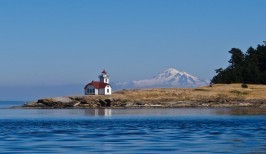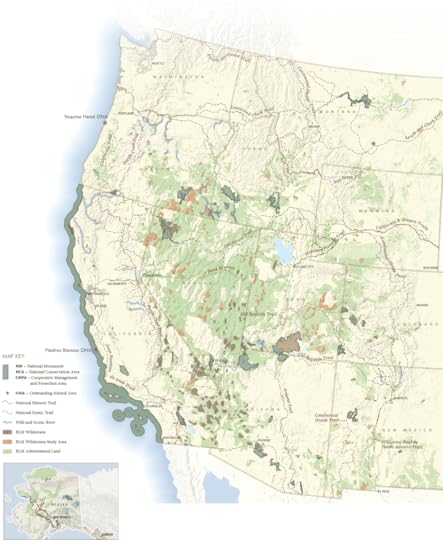Take Action to Save Habitat: #Conservation Lands
 This post focuses on habitat conservation. The examples are in the U. S., but there are similar protection efforts in other countries. More are needed everywhere. A first step is to visit a protected area and learn first hand what is at stake.
This post focuses on habitat conservation. The examples are in the U. S., but there are similar protection efforts in other countries. More are needed everywhere. A first step is to visit a protected area and learn first hand what is at stake.
The major threat to Earth’s plants and animals is direct habitat destruction by humans. Farming, logging, grazing, and construction of houses and roads are the leading types of destruction. Of course, habitat can be destroyed by volcanoes, meteorites, glacier expansion, earthquakes, etc., but none of these can compare to the size and extent of the human impacts.
 One approach to the problem is to protect some areas by limiting human access and use. National Parks, Wildlife Refuges, and Monuments are examples. U. S. Secretary of the Interior, Bruce Babbitt added a new strategy for protecting habitat. Opposition to new national parks and wilderness areas is so well established that those forms of protection are almost impossible to create. Babbitt combined existing regulations and formed policies that allowed for definition and protection of areas of special significance.
One approach to the problem is to protect some areas by limiting human access and use. National Parks, Wildlife Refuges, and Monuments are examples. U. S. Secretary of the Interior, Bruce Babbitt added a new strategy for protecting habitat. Opposition to new national parks and wilderness areas is so well established that those forms of protection are almost impossible to create. Babbitt combined existing regulations and formed policies that allowed for definition and protection of areas of special significance.
“The National Conservation Lands, established by Interior Secretary Bruce Babbitt in 2000, comprise 28 million acres of the most ecologically rich and culturally significant of lands managed by the Bureau of Land Management. They are found throughout the West, Alaska and even extend to the East Coast. They are our nation’s newest collection of protected public lands—standing in stature with our National Parks, National Forests and National Wildlife Refuges” (Conservation Lands Website).
Any form of protection is difficult to achieve. Hungry humans ignore such protections, and ambitious individuals see restrictions as threats to the accumulation of wealth and power. No effective steps are being taken to reverse human population growth, and in the U. S., continuous efforts are made by congressional representatives of ambitious individuals and corporations to remove the protections–to build hotels within national parks, to allow livestock grazing in wilderness areas, to increase motorized access, and to build trails through refuges. Many of these efforts succeed.
The U. S. National Conservation Lands include National Monuments, National Conservation Areas, Wilderness and Wilderness Study Areas, Wild and Scenic Rivers, National Scenic and Historic Trails, and more. The actual degree of protection is quite variable. Many of the units allow continuing livestock grazing and other destructive uses. For most, baseline conditions are poorly documented and there is no system in place to monitor changes. Invasive plants and animals, accelerated soil erosion, increasing air and water pollution, and spreading disease can go unnoticed for years. Ignored, such changes can destroy the habitat value of the Lands.
What to do
This summer, visit a reserved land unit. In the U. S., visit one or more of the sites on the map above. You can call the U. S. Bureau of Land Management office in your state or region for maps and site descriptions. Ask about ‘friends’ groups. You can probably join a hike or attend other programs led by local specialists. See for yourself what the Lands offer and what they need for better protection. Then write to political representatives calling for more and improved protection.
Contact Garry Rogers by email, or leave a comment after the email form.
[contact-form]
Filed under: Endangered Animals, Endangered Plants, Human Impacts, Nature Conservation Tagged: Endangered Species, Human Impact, Nature Conservation













